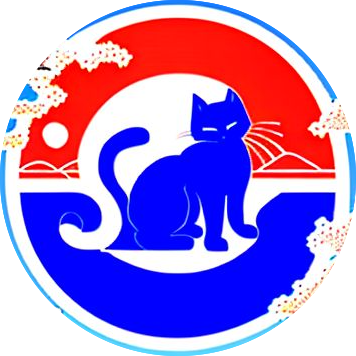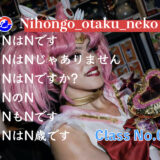こんにちは、JINです。
Konnichiwa, JIN desu.
きょうは、
これ、それ、あれ、のです、この、その、あの
kyouwa, kore, sore, are, nodesu, kono, sono, ano
についておしえます。
ni tsuite oshiemasu.
 JIN
JIN
できるようになること
みのまわりのものを、それがなにかたずねる。
Mino mawarino monowo, sorega nanika tazuneru.
もちぬしをつたえられる。
Mochinushi wo tsutaerareru.
- 🇫🇷
Montre un objet et demande ce que c’est.
On peut transmettre le propriétaire. - 🇺🇸
Point to an object and ask what it is.
The owner can be conveyed.
Grammar
これ、それ、あれはNです
- 🇫🇷 Les expressions « これ » (kore), « それ » (sore), et « あれ » (are) sont utilisées en japonais pour désigner des objets ou des choses spécifiques en fonction de leur proximité par rapport au locuteur et à l’interlocuteur.
- 🇺🇸 The expressions « これ » (kore), « それ » (sore), and « あれ » (are) are used in Japanese to indicate specific objects or things based on their proximity to the speaker and the listener.
- これ Kore
Ceci
This - それ Sore
Cela
That - あれ Are
Cela-là-bas
That over there
これはNです Korewa N desu
- 🇫🇷 Ceci est un <objet>.
- 🇺🇸 This is a <object>.
- これは つくえです。Kore wa tsukue desu.
Ceci est un bureau.
This is a desk. - それは とけいです。Sorewa token desu.
Cela est une horloge.
That is a clock. - あれは いえです。Arewa ie desu.
Cela là-bas est une maison.
That over there is a house.
Test
文作り・・・単語を変えて短い文章を作成する。
Changeons les mots et créons des phrases courtes.
Let’s change the words and create short sentences.
文作り・・・絵を参考にして短い文を作成する。
Créons de courtes phrases en nous référant aux images.
Let’s create short sentences with reference to the pictures.
- これは_です。Kore wa N desu.
- それは_です。Sore wa N desu.
- あれは_です。Are wa N desu.
画像
これはNですか。Kore wa N desuka.
- 🇫🇷 Cette structure peut être utilisée pour poser une question sur un objet spécifique en demandant : Est-ce que ceci est un(e) <objet>? Oui / Non.
- 🇺🇸 This structure can be used to ask about a specific object by saying, « Is this a <object>? Yes / No. »
- これは バスですか。korewa basu desuka.
・・・はい、バスです。…hai basu desu. - Est-ce que c’est un bus ?
Oui, c’est un bus. - Is this a bus?
Yes, it’s a bus.
- はい、バスです。hai, basu desu.
Oui, c’est un bus.
Yes, it’s a bus. - はい、ペンです。hai, pen desu.
Oui, c’est un stylo.
Yes, it’s a pen. - はい、かみです。hai, kami desu.
Oui, c’est du papier.
Yes, it’s paper. - →はい、そうです。hai, soudesu.
Oui, c’est ça / c’est exact.
Yes, that’s right.
- これは、Nですか。korewa, N desuka.
Est-ce que c’est N?
Is this N? - ・・・いいえ N じゃありません。iie, N ja arimasen.
Non, ce n’est pas N.
No, it’s not N. - ・・・いいえ、Nです。iie N desu.
Non, c’est bien N.
No, it is N.
Test
文作り・・・単語を変えて短い文章を作成する。
Changeons les mots et créons des phrases courtes.
Let’s change the words and create short sentences.
文作り・・・絵を参考にして短い文を作成する。
Créons de courtes phrases en nous référant aux images.
Let’s create short sentences with reference to the pictures.
- これは、じしょですか。korewa jisho desuka.
Est-ce que c’est un dictionnaire?
Is this a dictionary - これは、ほんですか。korewa hon desuka.
Est-ce que c’est un livre ?
Is this a book - これは、かさですか。korewa kasa desuka.
Est-ce que c’est un parapluie ?
Is this an umbrella? - はい/いいえ hai / iie
画像
これはなんですか。
- 🇫🇷 La phrase « これはなんですか。 » se prononce « Kore wa nan desu ka » et signifie littéralement « Qu’est-ce que c’est ? » en japonais. C’est une question très courante pour demander ce qu’est un objet ou une chose spécifique.
- 🇺🇸 « これはなんですか。 » is pronounced « Kore wa nan desu ka » and translates to « What is this? » It’s commonly used to inquire about the identity or nature of a specific object or thing in Japanese.
- これは なんですか。korewa nan desuka.
Qu’est-ce que c’est ?
What is this?
・・・ ケーキです。
C’est un gâteau.
It’s a cake.
Test
文作り・・・単語を変えて短い文章を作成する。
Changeons les mots et créons des phrases courtes.
Let’s change the words and create short sentences.
文作り・・・絵を参考にして短い文を作成する。
Créons de courtes phrases en nous référant aux images.
Let’s create short sentences with reference to the pictures.
- これは なんですか。korewa nan desuka.
Qu’est-ce que c’est ?
What is this
画像
これはXですか、Yですか。
- 🇫🇷 Cette forme en japonais est utilisée pour poser une question du type « Est-ce que c’est <chose A> ou <chose B>? C’est <chose A>. »
- 🇺🇸 In English, the structure « Is this <thing A> or <thing B>? It’s <thing A>.
Test
文作り・・・単語を変えて短い文章を作成する。
Changeons les mots et créons des phrases courtes.
Let’s change the words and create short sentences.
文作り・・・絵を参考にして短い文を作成する。
Créons de courtes phrases en nous référant aux images.
Let’s create short sentences with reference to the pictures.
- これはXですか、Yですか。
korewa X desuka, Y desuka?
画像
これはNのNです① korewa N no N desu. (Contenu / content)
- 🇫🇷 Cette structure en japonais est utilisée pour dire « C’est un(e) <chose> de <contenu> ».
- 🇺🇸 This is a <thing> of <content>. » In usage, it’s employed to describe or indicate a particular item or object and its contents.
- これは くるま の ほんです。korewa kuruma no hondesu.
Ceci est un livre sur les voitures.
translates to « This is a book about cars. - これは にほんご の ほんです。korewa nihongo no hondesu.
Ceci est un livre sur la langue japonaise.
This is a book about the Japanese language. - これは パソコン の ほんです。korewa pasokon no hondesu.
Ceci est un livre sur les ordinateurs.
This is a book about computers.
Test
文作り・・・単語を変えて短い文章を作成する。
Changeons les mots et créons des phrases courtes.
Let’s change the words and create short sentences.
文作り・・・絵を参考にして短い文を作成する。
Créons de courtes phrases en nous référant aux images.
Let’s create short sentences with reference to the pictures.
- これは なんの ほんですか。korewa nanno hondesuka.
- De quoi est-ce le livre ? / C’est quoi ce livre ?
What kind of book is this? - ・・・えいごの ほんです。…eigono hondesu.
C’est un livre d’anglais.
It’s an English book.
画像
これはNのNです② korewa N no N desu. (Quelqu’un / Person)
- 🇫🇷 La forme « kore wa N no N desu. » est utilisée en japonais pour indiquer que quelque chose appartient à quelqu’un.
- 🇺🇸 « This is <person’s name>’s <item>. » It’s used to denote possession or ownership of an item by a specific person.
- これは わたしの かぎです。korewa watashino kagidesu.
C’est ma clé.
This is my key. - これは Nさんの いえです。korewa Nsann no iedesu.
C’est la maison de Monsieur/Madame N.
This is Mr./Ms. N’s house.
Test
文作り・・・単語を変えて短い文章を作成する。
Changeons les mots et créons des phrases courtes.
Let’s change the words and create short sentences.
文作り・・・絵を参考にして短い文を作成する。
Créons de courtes phrases en nous référant aux images.
Let’s create short sentences with reference to the pictures.
- これは だれの くつですか。korewa dareno kutsudesuka.
À qui sont ces chaussures?
Whose shoes are these?
画像
これはだれのNですか。kore wa dare no N desuka.
- 🇫🇷 La structure « kore wa dare no N desuka。 » en japonais est utilisée pour demander à qui appartient un objet spécifique.
- 🇺🇸 The structure « kore wa dare no N desuka. » in Japanese is used to inquire about the ownership of a specific item.
- これは だれの シャツですか。kore wa dare no syatsu desuka.
À qui est cette chemise ?
Whose shirt is this?
Test
文作り・・・単語を変えて短い文章を作成する。
Changeons les mots et créons des phrases courtes.
Let’s change the words and create short sentences.
文作り・・・絵を参考にして短い文を作成する。
Créons de courtes phrases en nous référant aux images.
Let’s create short sentences with reference to the pictures.
- これは だれの N ですか。kore wa dare no N desuka.
画像
これはNのです kore wa N no desu
- 🇫🇷 Si l’objet est évident, il peut être omis.
- 🇺🇸 If the item is obvious, it can be omitted.
- これは オビワン の ふねです。kore wa obiwan no hune desu.
C’est le bateau d’Obi-Wan.
This is Obi-Wan’s boat. - これは おびわんのです。korewa obiwan no desu.
C’est à Obi-Wan.
This belongs to Obi-Wan.
- はい、わたしの です。hai, watashi no desu.
Oui, c’est à moi.
Yes, it’s mine. - いいえ、わたしの じゃありません。iie, watashi no jaarimasen.
Non, ce n’est pas à moi.
No, it’s not mine.
Test
文作り・・・単語を変えて短い文章を作成する。
Changeons les mots et créons des phrases courtes.
Let’s change the words and create short sentences.
文作り・・・絵を参考にして短い文を作成する。
Créons de courtes phrases en nous référant aux images.
Let’s create short sentences with reference to the pictures.
画像
このNはNのです kono N ha N nodesu.
この、その、あの kono, sono, ano
- 🇫🇷 Cet <objet> appartient à <personne>.
Les mots japonais « この (kono) », « その (sono) » et « あの (ano) » sont utilisés pour démontrer la proximité par rapport à l’objet dont on parle. - « この (kono) » se traduit par « ce/cette » pour indiquer quelque chose proche de celui qui parle.
- « その (sono) » se traduit par « ce/cette » pour indiquer quelque chose proche de celui à qui on parle.
- « あの (ano) » se traduit par « ce/cette » pour indiquer quelque chose éloignée des deux.
- 🇺🇸 This <item> belongs to <person>.In English, the Japanese words « この (kono), » « その (sono), » and « あの (ano) » are used to indicate proximity to the object being referred to.
- « この (kono) » translates to « this » to denote something close to the speaker.
- « その (sono) » translates to « that » to indicate something close to the listener.
- « あの (ano) » translates to « that » to indicate something far from both the speaker and the listener.
@nihongo_otaku_neko この その あの #learnjapanese #日本語勉強中 #hiragana #katakana #kanji #japonais #jlpt #fyp ♬ オリジナル楽曲 – nihongo_otaku_neko
Test
文作り・・・単語を変えて短い文章を作成する。
Changeons les mots et créons des phrases courtes.
Let’s change the words and create short sentences.
文作り・・・絵を参考にして短い文を作成する。
Créons de courtes phrases en nous référant aux images.
Let’s create short sentences with reference to the pictures.
- この かばんは わたしのです。kono kaban wa watashi no desu.
Ce sac est à moi.
This bag is mine. - その スマホは あなたのです。sono sumaho wa anatanodesu.
Ce téléphone portable est le vôtre.
That smartphone is yours. - あの べんとうは だれのですか。ano bentou wa darenodesuka.
À qui appartient ce bento ?
Whose bento is that?
画像
まとめ Summary
みのまわりのものを、それがなにかたずねる。
Mino mawarino monowo, sorega nanika tazuneru.
もちぬしをつたえられる。
Mochinushi wo tsutaerareru.
- 🇫🇷
Montre un objet et demande ce que c’est.
On peut transmettre le propriétaire. - 🇺🇸
Point to an object and ask what it is.
The owner can be conveyed.
 Nihongo Otaku
Nihongo Otaku 

